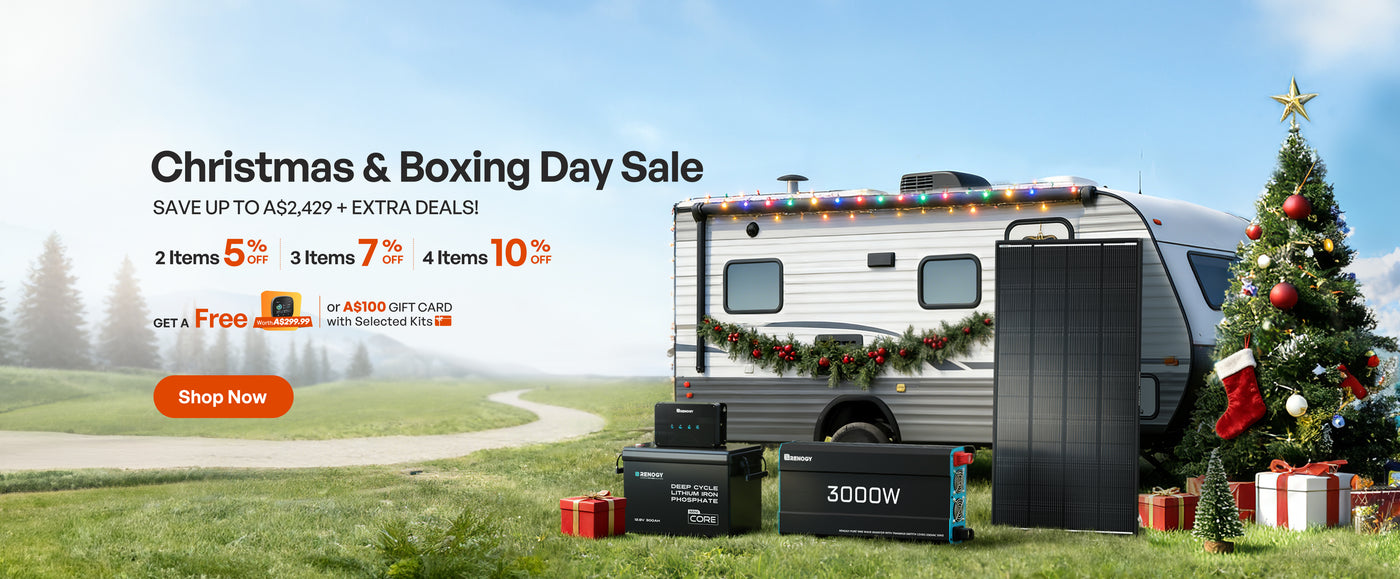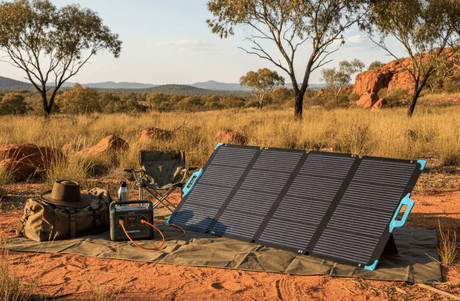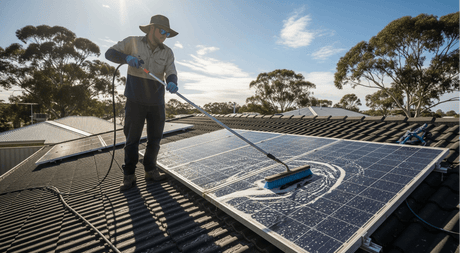Solar power continues to grow in popularity as a green and renewable energy source. Australians can also benefit from the financial rewards that come with switching to solar power.
Not only does solar power reduce your ongoing energy costs, but it may cost less to install than you think. Several solar panel incentives and federal government subsidies encourage homeowners and small businesses to switch to solar power.
Switching to solar power offers many long-term benefits and cost savings. But the initial solar setup investment does require upfront costs which can be daunting. Luckily, there are incentives available to help everyday people reduce the upfront cost of installing solar power systems in Australia.
With just a little bit of research, you could save thousands of dollars on the costs of installing solar panels through solar subsidies and grants. This article will break down how these grants and financial incentives work and how to find them.
Australia Solar Panel Grants and Incentives
There are three main types of solar incentives or rebates available to Australians. These rebates allow you to save or get money back when installing solar panels.
- Federal Solar Incentives: The first and most readily available incentive are Small-scale technology certificates (STCs). The federal government is offering these to households across the country to help cover the costs of solar panel installations.
- State Solar Incentives: State-issued solar rebates or financial incentives are also available in some states. These are available to residents in addition to the federal benefits. State benefits typically help cover the costs of installations or solar battery setup.
- Feed-In Tariffs: Feed-in tariffs or 'refunds' are offered by different energy providers and will differ by state and energy retailers. These tariffs give you money back on an ongoing basis when you send excess solar energy back to the electricity grid.
Federal solar power incentives
Small-scale technology certificates (STCs)
Federal financial incentives are provided by the Australian Federal Government and are available in most parts of the country. These incentives reward the installation of small-scale renewable energy systems.
Small-scale renewable energy systems include solar, wind, or hydro. Installing solar photovoltaic (PV) panels is the most straightforward and most accessible of these options for the everyday person to install in their home.
Homeowners or small business owners who install one of these energy systems can benefit under the Small-scale Renewable Energy Scheme (known as SRES) to help cover the purchase cost.
Once you've installed one of these renewable energy systems, you will be issued Small-scale Technology Certificates (STCs). These STCs have a monetary value that can be redeemed when selling or assigning them. Some installations may be granted more STCS. The number of STCs issued depends on two factors.
- How much renewable electricity your system produces (or how much electricity consumption it reduces).
- The climate in the region where you've installed your system.
The STC program is not officially a government "rebate". Although it is a government-run scheme, it works by compelling other people to buy your STC certificates. So although you can save thousands on the cost of your installation through the system, the money does not come directly from the Australian government in the form of a rebate.
Who is eligible for the STC incentive?
To be eligible for the STC incentive, households or individuals must meet specific requirements. Most residential solar panel installations will fall within these requirements.
- The photovoltaic system must be less than 100kW in size.
- The solar panel system must be designed and installed by a Clean Energy Council accredited professional.
- You must use solar panels and inverters in your installation, which have been approved for use within Australia.
Feed-In Tariff
The Feed-in Tariff (known as FiT) is another Australian subsidy for households using solar power. These cost savings are available to anyone who has a grid-tied solar installation.
Most household solar systems will be connected to the electricity grid. So, unless you live off-grid with solar batteries, or with portable solar generators, any excess solar power produced by your solar panels goes into the grid.
If power is not either stored or immediately used by your energy consumption, it will feed into the electricity grid to be used by other properties. The FiT means electricity providers will pay you for the solar electricity your system exports to the power grid.
You can use our solar panel calculator to estimate how much power your household will use and how much excess power would go into the grid.
The solar feed-in tariff, also referred to as the "buyback rate," is the amount you will be paid per kilowatt-hour of solar electricity exported from the solar system to the grid. Most Australian electricity retailers will now offer competitive feed-in tariffs within their standard product range.
The FiT should not be confused with the STC program. The STC program and state incentives usually focus on helping homeowners with just the initial setup costs of solar installations. FiT can provide financial benefits throughout your PV system's lifetime.
How much is my rebate?
As of May 2021, a solar system will be subsidised by the Australian Federal Government scheme at about $525 per kW installed. This subsidy will equate to around $3,465 savings on a typical 6.6kW solar power system.
Rebates will usually be applied when you purchase a system at the point of sale. That means advertised prices on solar panels and solar panel kits are likely to already have the solar rebate applied.
Subsidies will change every year, so it is essential to do your research and get up-to-date information at the time of purchase. The current subsidy looks likely to continue for at least another decade. However, current STC legislation is reducing the solar panel incentives by one-fifteenth every year, starting from Jan 2017 until 2031, when it will drop to zero.
Solar rebates are likely to be reduced as demand and adoption of solar power systems increase over time. Early adopters are more likely to reap the rewards of government incentives, so it doesn't pay to delay.
The STC system is designed to self-regulate and encourage the increased adoption of renewable energy sources. But if adoption becomes more popular, and the buyer's market for solar power is hot, then the value of the STC incentive or 'STC price' may reduce.
Currently, the STC price can range from between $0 to 40 Australian dollars. The highest value it can reach under the current law is $40.
The value of a solar panel 'rebate' also depends on where in Australia you live. Australia has been divided into four rebate zones, with Zone One getting the highest value rebates and Zone Four getting the lowest.
Zone One: North West & Central Australia, incentive = $4,066
Zone Two: Darwin, Central Australia, incentive = $3,852
Zone Three: Brisbane, Sydney, Adelaide & Perth, incentive = $3,466
Zone Four: Melbourne & Tasmania, incentive = $2,971
Reference image: https://www.solarquotes.com.au/panels/rebate/
State-issued solar rebates and incentives
In some states across Australia, there are additional solar incentives for installing small-scale renewable energy systems.
State government solar rebates and incentives:
NSW
The New South Wales Government has a solar power incentive called the Empowering Homes program. This incentive is a state-wide scheme that provides eligible NSW residents interest-free loans to install solar battery systems. The available interest-free loans go up to $9000 to cover a storage battery.
There is also $14,000 in interest-free loans available for a solar photovoltaic and solar battery storage system. To apply, you must be an eligible New South Wales resident; these include owner-occupiers who have an annual household income of under $180,000.
VIC
The Victoria government also provides incentives for homeowners to install solar power. The Victoria program is known as the Solar Homes program. The program provides eligible Victorian households a rebate of up to $1,850 off the initial purchase costs of installing solar panels.
Eligible homes in Victoria can also claim an interest-free loan for their installation. The loan amount will be equivalent to the value of the rebate up until 30 June 2021.
A rebate is also available to eligible landlords in this state. Landlords can claim up to $1,850 for solar installations in rental properties. Eligible landlords who meet the requirements can also claim an interest-free loan from the Victorian Government, which is equivalent to the rebate amount.
QLD
Residents in Queensland are eligible for the solar installation rebate through the Federal Government program.
The Queensland Government used to offer an additional interest-free loan scheme for solar power installations. However, at the time of writing, applications for this loan scheme are now closed. There are currently no other state rebates offered in Queensland, but you should check back regularly for any updates.
WA
Residents in Western Australia are eligible to receive assistance for solar installations through the Federal Government rebate program. However, WA has no additional state-based government rebates.
SA
There are solar power rebates and incentives available in South Australia. South Australians are eligible for the federal government solar rebate, as well as an additional state benefit for purchasing a solar battery.
Homeowners can also receive a state rebate when purchasing a solar battery through the South Australian government's Home Battery Scheme. You can receive $300 for every kWh of solar battery storage capacity you install through this scheme, with a maximum rebate of $3,000.
TAS
Tasmanians are eligible for federal solar rebates, but there are no specific state solar incentives at this time. However, the On-Farm Energy Audit and Capital Grant Program is available to Tasmanian farmers and provides subsidies to help reduce their energy use and bills.
ACT
The Australian Capital Territories offer several incentives for solar power adoption, in addition to the STC federal scheme. The ACT government provides local residents two additional solar rebate schemes: the Next Generation Energy Storage Grant and the Solar for Low Income Households Program.
Some Australian Capital Territory households will be eligible for Next Generation Energy Storage Grants. These grants provide both households and businesses a discount for installing a solar battery storage unit alongside a new or existing rooftop solar panel system.
This Energy Storage Grant program is only available to a maximum of 5,000 ACT households. The current rebate value is $825 per kilowatt (kW) up to a maximum of 30kW. A typical household solar system of 5kW would be eligible for around $4000 in financial rebates from this program.
The second program is called the Solar for Low Income Households Program. This program incentivizes Australian Capital Territory pensioners to invest in rooftop solar panels to reduce their energy costs. The subsidy covers 50% of the total upfront cost of a solar PV system.
The Low Income Households Program incentive also provides an interest-free loan with ActewAGL so eligible pensioners can pay back the remaining setup costs over three years with no down payment.
NT
In the Northern Territory, local residents are eligible for the federal STC program and FiT, but there are no other specific state rebates available at this time.
Switching To Solar Power Pays Off
Solar power is an excellent way for Australian households to save on electricity, and with some research, you can find some good solar deals and incentives. Federal and state incentives and rebates can help you reduce the initial costs of installation - so you can reap the long-term savings and benefits of switching to solar.







![What Is a DC to DC Battery Charger [Comprehensive Guide]](http://au.renogy.com/cdn/shop/articles/IMG_3829_bd86de74-31d6-49fd-b9d5-265bb723091d.jpg?v=1757582605&width=460)


